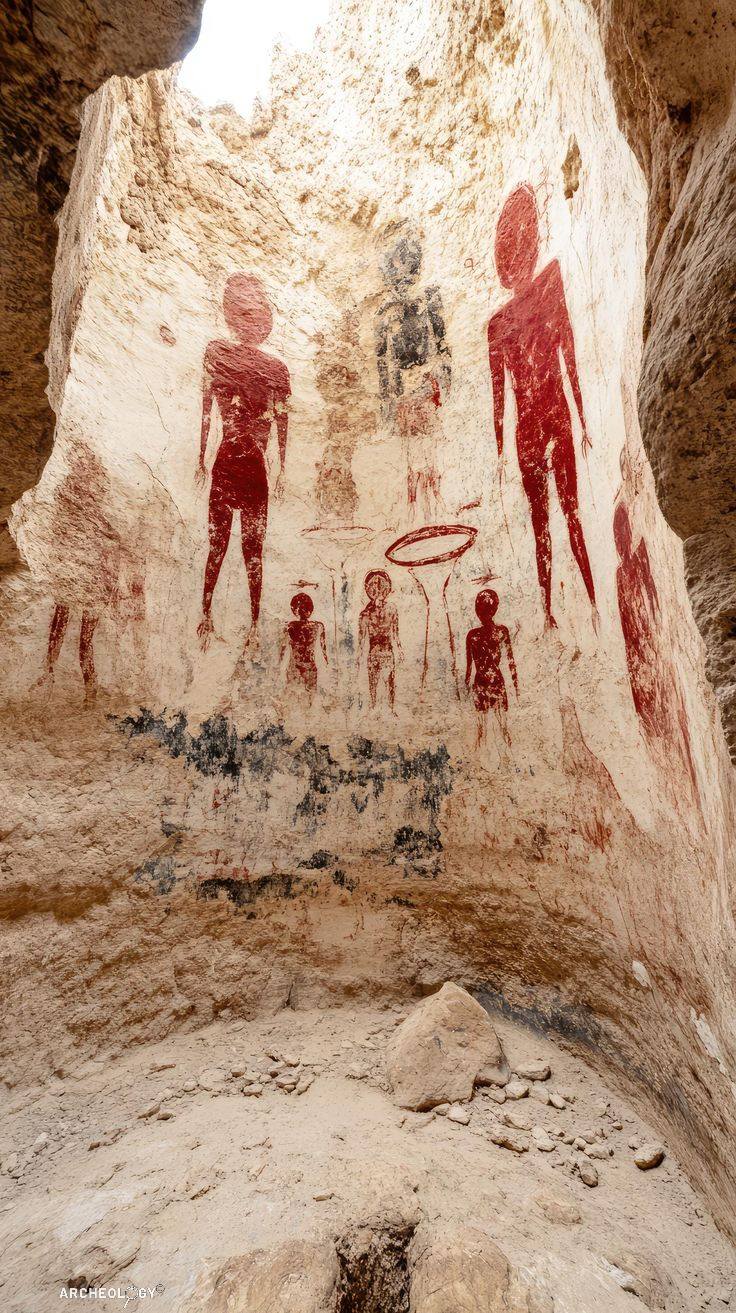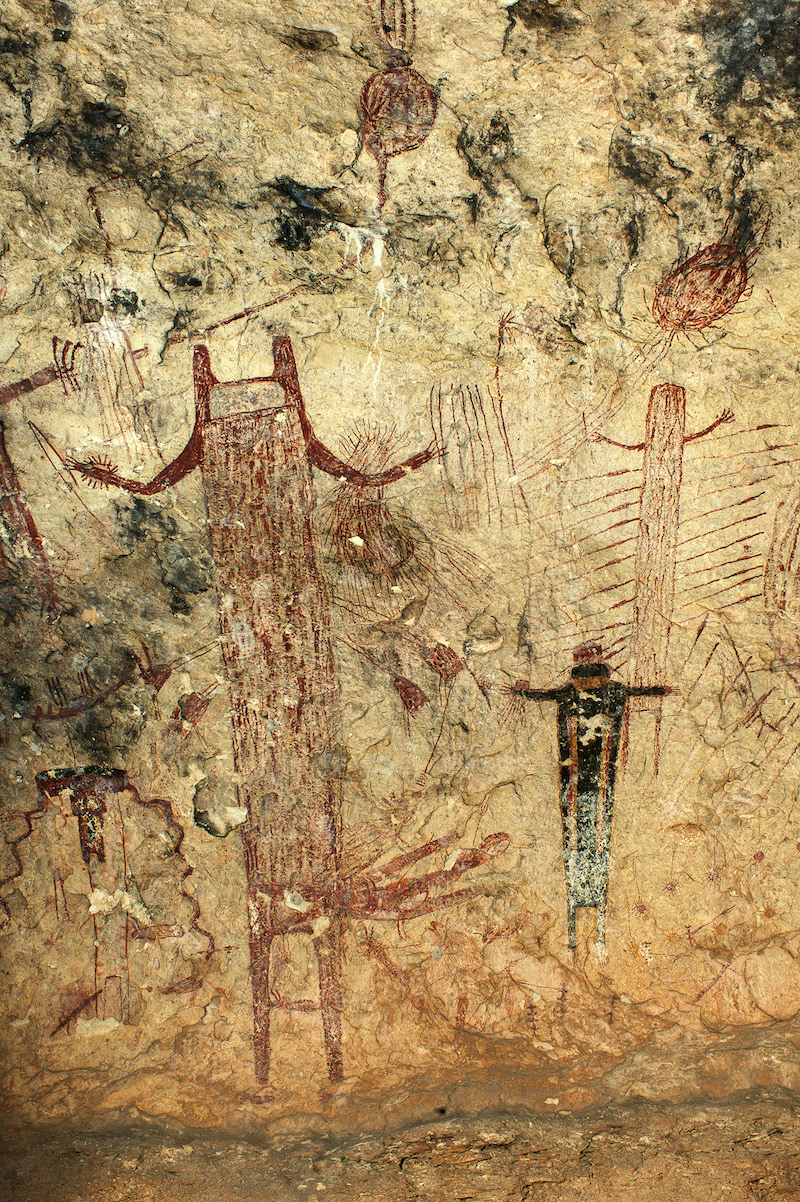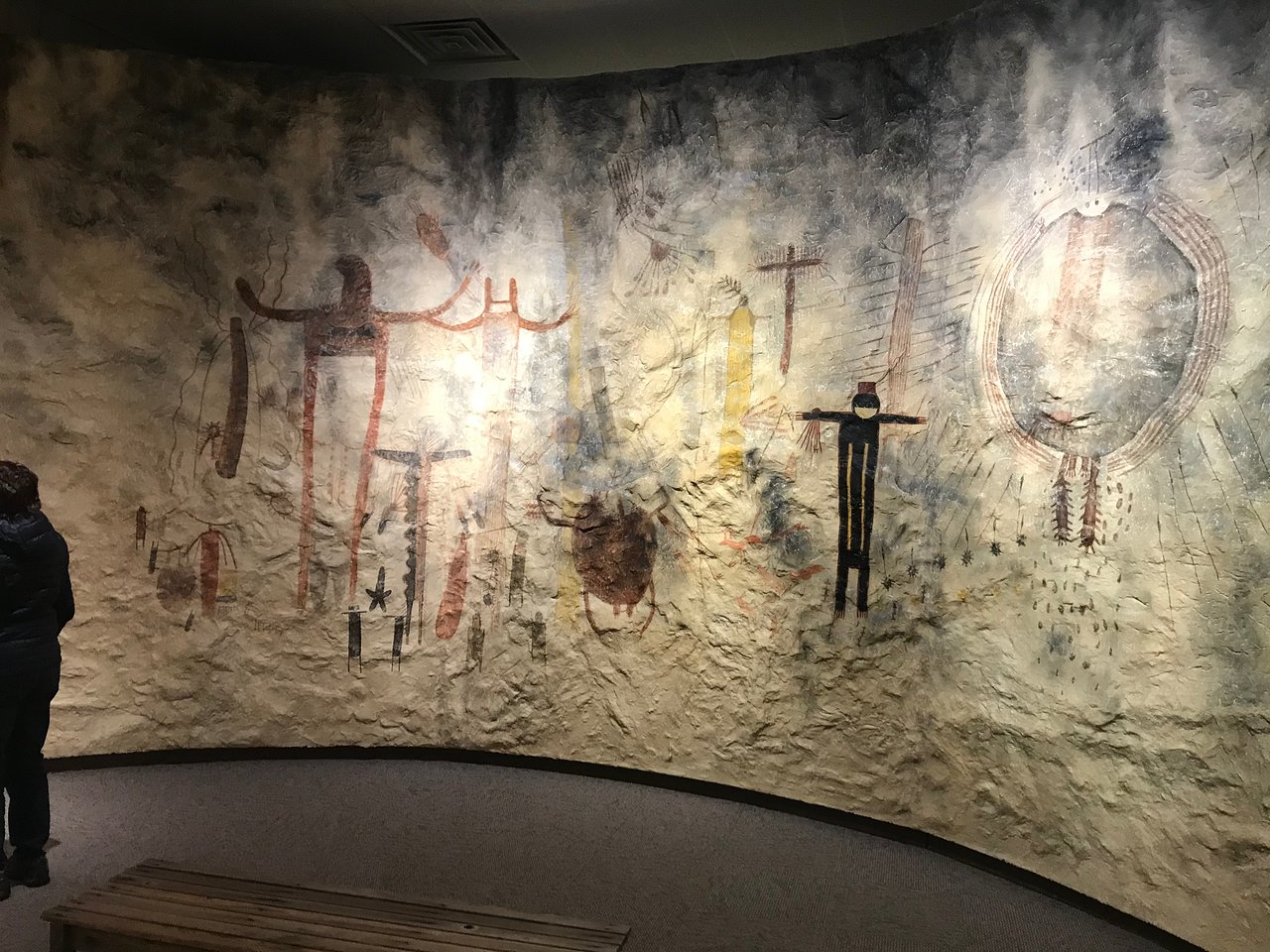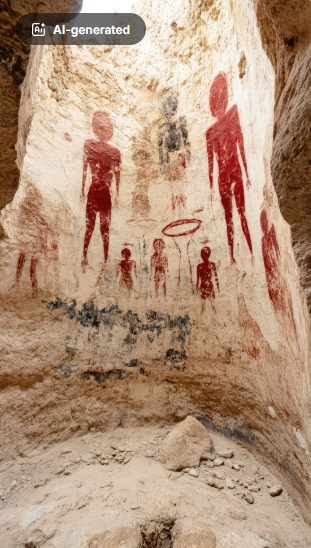
This image appeared in a public Facebook group titled Ancient Wonders of Archaeology, Art History & Architecture. The post was uploaded sometime in July 2025. However, when I attempted to retrieve it later, it had vanished—or at least, I was unable to locate it again. The group has over 619,000 members.
Alone in the vastness of space, that is. And many of us, alas, in the cramped solitude of our own rooms. Perhaps that is why I tend to raise an eyebrow —the left one— whenever I come across posts whose authors claim to detect, in ancient structures, rock art, or oral legends, undeniable evidence of extraterrestrial encounters at the dawn of time.
For now, I am not interested in ancient engineering or mythical storytelling. I prefer to linger on the cave paintings left behind by our most distant ancestors.
I won’t concern myself here with the question of authenticity —a separate affair altogether— but rather with the intention behind showcasing these images in widely public forums.
The author claims they are located in the Fate Bell Shelter, within Seminole Canyon State Park and Historic Site, in southwest Texas, and that they belong to the so-called Pecos River Style, characteristic of the Indigenous peoples who inhabited the area some 3,000 to 4,000 years ago.
For historical context: while these paintings were drying in the desert wind, in Mesopotamia people were inscribing cuneiform on clay tablets; China was sketching the early contours of what we would later call the Shang dynasty; India was shaping its sacred knowledge, mystical poetry, and cultural structures through the oral —and eventually written— creation of the Vedas; and not far away, in Mexico, Central America, and further south, the great pre-Columbian temples were beginning to rise.
I’ve saved Egypt’s pyramids for last, of course —perennial favorites in the canon of alien engineering theories and the speculative histories of vanished hyper-civilizations.
Which is to say: when our prehistoric painters ventured into rock art, they were, chronologically speaking, rather late to the party. They may well have harbored complex belief systems and extraordinarily refined notions of the spiritual —no doubt— but they had no writing and left behind no ruins, only pigment. One might take this as evidence of a lack of cultural advancement, or, alternatively, as a rare sophistication: an aesthetic intuition that everything designed to endure is ultimately doomed to disappear.
On the other hand:
There is something genuinely touching about how many people see aliens everywhere. Curiously, a great number of them are proud atheists who believe quite fervently in extraterrestrials, based on evidence that is, more often than not, fuzzy, vague, or interpretively convenient.
It’s true that the figures appear to float, inquisitively, above what might be witnesses. They seem to descend upon them, ominous. And yet, as aliens go, they exhibit unmistakably humanoid forms —albeit exaggerated and elongated. Their heads are blank and perfectly round. Anyone could mistake them for space helmets. This, of course, is part of the symbolic language of modern alien mythology. We always assume that visitors from beyond must be more intelligent than we are. Hence, we interpret disproportion —large heads, slight bodies— as a sign of superior intellect, reinforcing their status as decidedly “not from here.”
Nor do the biconcave discs help —those shapes resembling flying saucers, long since absorbed into the visual lexicon of interstellar travel. They might be many other things, infinitely more prosaic: a mouth, an eye, or a practical way to cover the salad so the joyous flies wouldn’t get to it first.
That said, the whole scene is overwhelming —and it does, undeniably, resemble an unexpected alien visitation slipping through a portal in the earth.
But we know absolutely nothing about the people who painted them. The scene may be ritualistic or mythological. In fact, descendants of these ancient artists consider the paintings sacred: deities, ancestral spirits, or shamans in trance.
It is likely that our modern obsession with alien visitations truly took off with the events at Roswell. The standard depiction of “the visitor from another world” probably originates with the 1961 abduction story of Betty and Barney Hill, who claimed to have been taken by non-human beings during a drive through New Hampshire. Under hypnosis, they described beings with anatomies unlike ours: small, gray, hairless, with immense black eyes. Their story, widely circulated by the media, laid the groundwork for an iconography that would repeat itself, with only minor variations, in hundreds of later accounts.

Through months of sessions and hypnosis, a popular technique at the time, the couple began to recall what happened to them. According to the Hills, the UFO had landed on their car as they were speeding down the mountains and put them to sleep. Afterwards, the grey beings they had seen earlier had led them up a long ramp into the spacecraft. Once inside, the Hills were separated and individually tested. They were asked to climb on a metal table and remove their clothes, where the grey beings would pluck their hairs, take clippings from their nails, and peel off parts of their skin. Each sample was placed on something that resembled a glass slide. The grey beings also probed needles into their arms, legs, and heads. Betty recalled that one needle was even inserted into her stomach as a pregnancy test.
This image has transcended the paranormal and settled comfortably into mainstream pop culture. It shows up in films, television series, graphic novels, and video games. We’ve come to accept it. We like it. It frightens us. These beings are invariably portrayed as technologically superior entities who insert needles and tubes into every imaginable human orifice with chilling indifference and surgical detachment. Hundreds of atheists are convinced they are part of a cosmic network of genetic manipulation —and that we, the guinea pigs, are endlessly fascinating specimens.
There are many ways to interpret these figures... Take the round heads, for example. In antiquity, halos symbolized radiance, divine insight, illumination —an inner sun whose roundness echoed that of the moon. These luminous discs marked the sacred. Conspiracy theorists, naturally, will argue that ancient civilizations derived these motifs from alien space helmets.
Personally, I find the impulse to see alien evidence in every scratch on the wall to be, well... profoundly religious.
Final notes
These particular paintings appear —are— more fake than most of the nails from Christ’s cross sold in the souks of Marrakech. But they serve the point.
The others —you’ll know them by the photo captions— are genuine. Less spectacular, to be sure. Quieter. But all the more enigmatic for it.


















Comments powered by Talkyard.